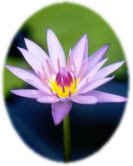Overactivity - Rajas
The Yogic diet avoids substances that are over-stimulating, or rajasic. Onions, garlic, coffee, tea, and tobacco are rajasic, as are heavily spiced and salted items, and many ready-prepared convenience foods and snacks. Refined sugar, soft drinks, and chocolate are also rajasic. Rajasic foods arouse animal passions, bring a restless state of mind, and make the person over-active. They destroy the mind-body balance that is essential for happiness.
Rajasic Foods
"The foods that are bitter, sour, saline, excessively hot, pungent, dry and burning, are liked by the Rajasic and are productive of pain, grief, and disease."
Bhagavad Gita, 17-9
Rajasic Behaviour
Rajasic foods overstimulate the body and mind, cause physical and mental stress, and encourage circulatory and nervous disorders.
Inertia - Tamas
Tamasic substances are avoided in the Yogic diet because they produce feelings of heaviness and lethargy. Meat, fish, eggs, drugs, and alcohol are tamasic, as are overcooked and packaged foods. Other tamasic items include those that have been fermented, burned, fried, barbecued, or reheated many times, as well as stale products or those containing preservatives. Mushrooms are included in this category, as they grow in darkness.
Tamasic Foods
"That food which is stale, tasteless, putrid, rotten and impure refuse, is the food liked by the Tamasic."
Bhagavad Gita, 17-10
Tamasic Behaviour
A tamasic diet benefits either body nor mind. It makes a person dull and lazy, lacking in high ideals, purpose, and motivation. Such individuals tend to suffer from chronic ailments and from depression. Over-eating is tamasic.
Purity - Sattva
The Yogic diet consists of sattvic foods that calm the mind and sharpen the intellect. These are pure, wholesome, and naturally delicious, without preservatives or artifical flavourings. They include fresh and dried fruits and berries, pure fruit juices, raw or lightly cooked vegetables, salads, grains, legumes, nuts, seeds, wholemeal breads, honey, fresh herbs, herbal teas, and dairy products such as milk and butter. A sattvic diet is easily digested and supplies maximum energy, increasing vitality, strength, and endurance. It will help to eliminate fatigue, even for those who undertake strenuous and difficult work. Yogis believe that people's food preferences reflect their level of mental purity, and that these preferences alter as they develop spiritually.
Sattvic Foods
"The foods which increase life, purity, strength, health, joy, and cheerfulness, which are savory and oleaginous, substantial and agreeable, are dear to the sattvic people."
Bhagavad Gita, 17-8
Sattvic Behaviour
A sattvic diet brings purity and calmness to the mind, and is both soothing and nourishing to the body. It promotes cheerfulness, serenity, and mental clarity, and helps to maintain mental poise and nervous equilibrium throughout the day.
The Rules of Eating
"Purity of mind depends on purity of food." - Swami Sivananda
- Try to keep your meals on a regular schedule, but if you do not feel hungry at meal time, fast until the next meal.
- Eat slowly, and savour your food. Chew it thoroughly, remembering that digestion begins in the mouth.
- Eat only four or five different foods at one meal. Complex mixtures are difficult to digest. Do not snack between meals.
- Do not overload your system. Fill half the stomach with food, one quarter with liquid, and leave the rest empty.
- Maintain a peaceful attitude during the meal. Try to eat in silence.
- Change your diet gradually.
- Before you eat, remember God, who dwells in all foods and who bestows all bounties.
- Try to fast for one day a week.
- Eat at least one raw salad every day.
- Eat to live - don't live to eat.
Source from Yoga Mind & Body by Sivananda Yoga Vedanta Centre









